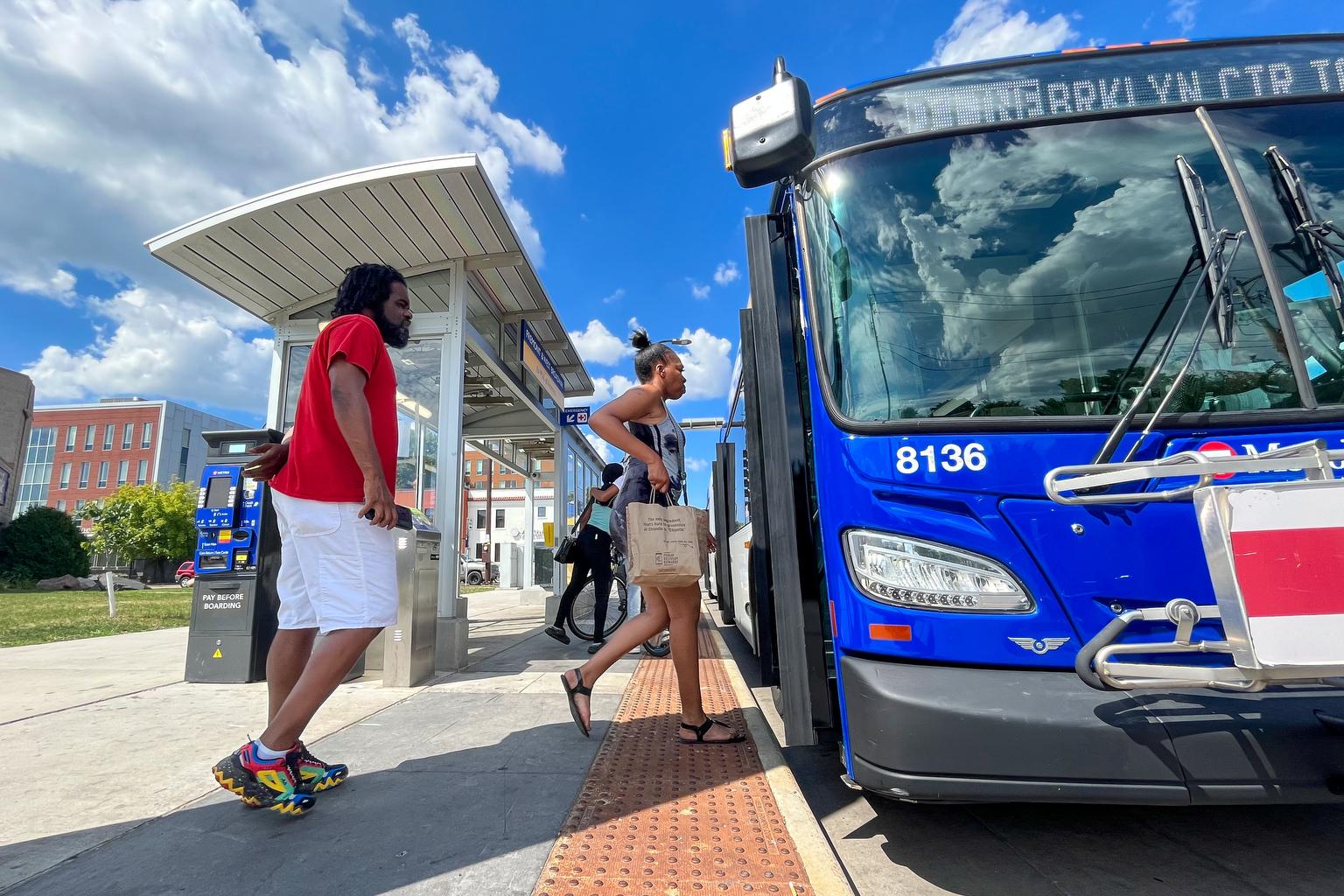
Nathaniel Minor reported this story from Minneapolis and Denver.
Dawn Morgan’s bus ride from her home in south Minneapolis to that shining beacon of consumerism and pride of Minnesota, the Mall of America, used to take about an hour.
“It stopped at almost every corner,” Morgan said of her local bus. “It was a long ride.”
These days though, Morgan’s bus ride is 20 minutes shorter each way. Metro Transit, the local transit agency in the Minneapolis–Saint Paul area, has mostly replaced the old local route with a new “bus rapid transit” line designed for speed.
“This is a lot quicker,” Morgan said.
Minneapolis and St. Paul are leading the pack of U.S. cities that are investing in bus rapid transit as a relatively cost-effective, quick way to improve public transit service — especially in dense city neighborhoods where transit is used for more than just commuting.
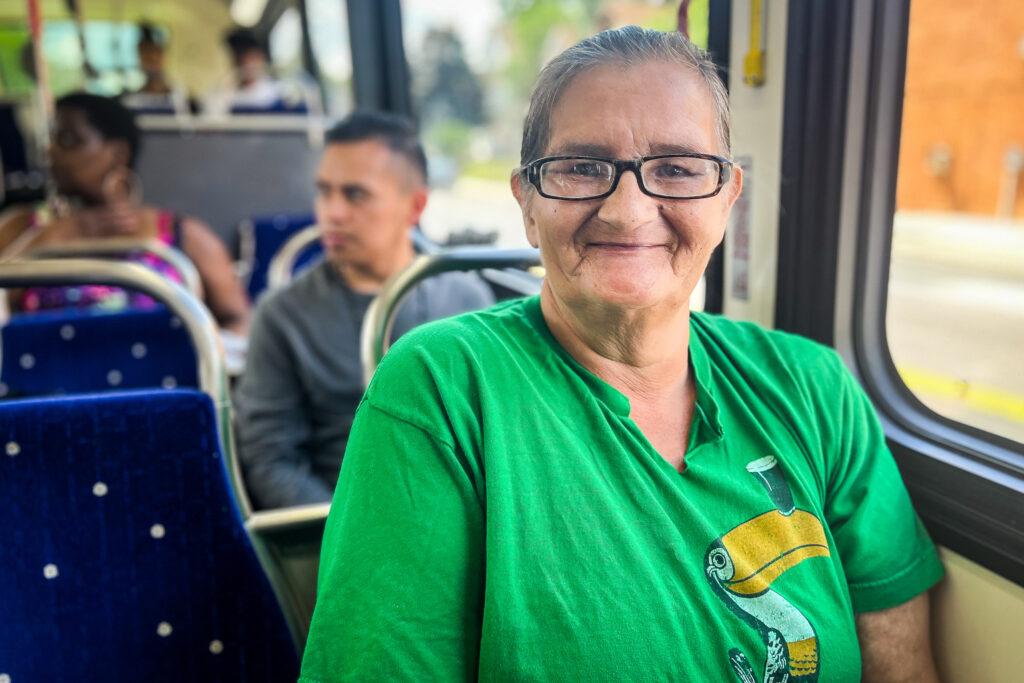
While rail lines can take decades to plan and build, with costs running into the billions, bus rapid transit lines are often faster and cheaper to construct.
“If you're looking at bang for the buck, this is the way to do it,” said Bill Lindeke, an urban studies lecturer at the University of Minnesota and public transportation advocate.
The Twin Cities has three bus rapid transit lines — often called BRT — on city streets now and plans to open five more by 2028. The Denver area is now getting into the BRT game, too, and transportation officials have traveled recently to the Twin Cities and have come home inspired.
“If you look at what they've been able to do in a relatively shorter period of time, it's really impressive,” said Brian Welch, RTD’s acting assistant general manager for planning, adding: “To me it feels like a system. That's what we want to get to in Denver.”
Denver’s BRT system will be called the Lynx, with lines on East Colfax, Federal and Colorado Boulevards by 2030.
In the Twin Cities, some bus stops look like train stations.
Many of the stops on Morgan’s old local bus — the No. 5 — were marked by little more than a post in the ground. Now, the new D Line picks up and drops off passengers at actual stations, with ticket machines, a real-time information display, trash and recycling cans, benches, security cameras and emergency telephones, a large shelter with overhead heaters, bike racks and plenty of seating.
“We got it pretty good,” said Johnny Egurrola, who was riding the D Line on a recent morning.
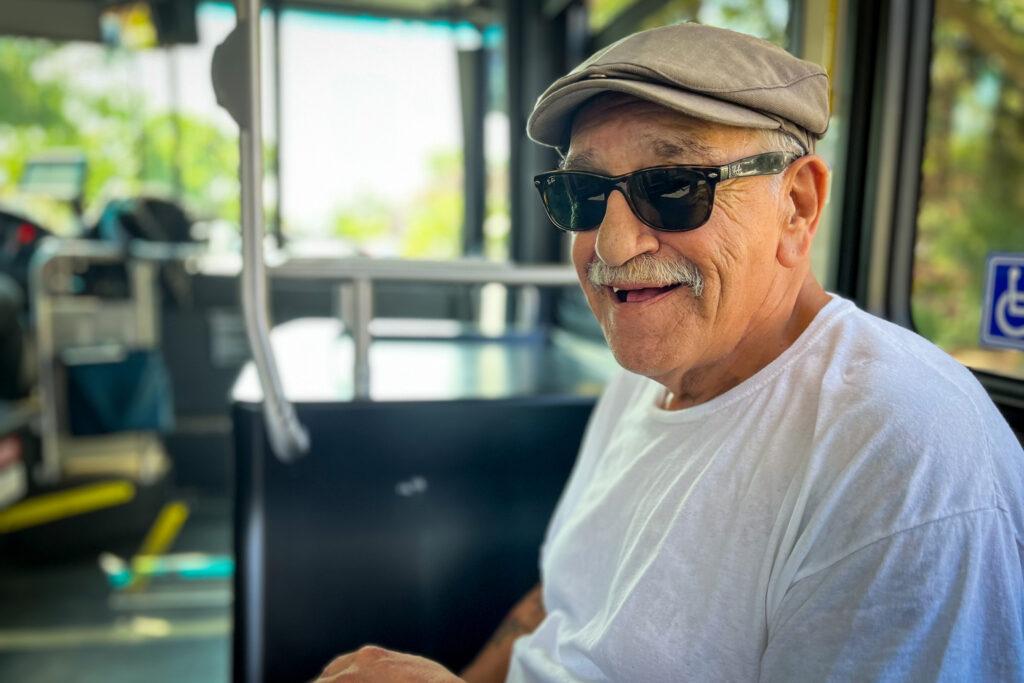
BRT stations in Minneapolis–Saint Paul are designed to speed up boarding. High curbs are nearly level with bus floors. Passengers can buy tickets or validate a pass at the station and board and deboard from all three of the bus’ doors. On a recent morning, it took 13 seconds for four people to get on and three people to leave a D Line bus.
Much like RTD’s light rail system, vehicle operators on Metro Transit’s BRT lines do not check fares. They are enforced through spot checks, though Metro Transit officials said they did not have recent statistics on compliance rates.
Stations are also spaced farther apart —every four blocks or so — than a typical local bus line to speed up service.
“You might have to walk a block or two, but I think it's a lot better,” said Morgan, a self-described disabled grandmother.
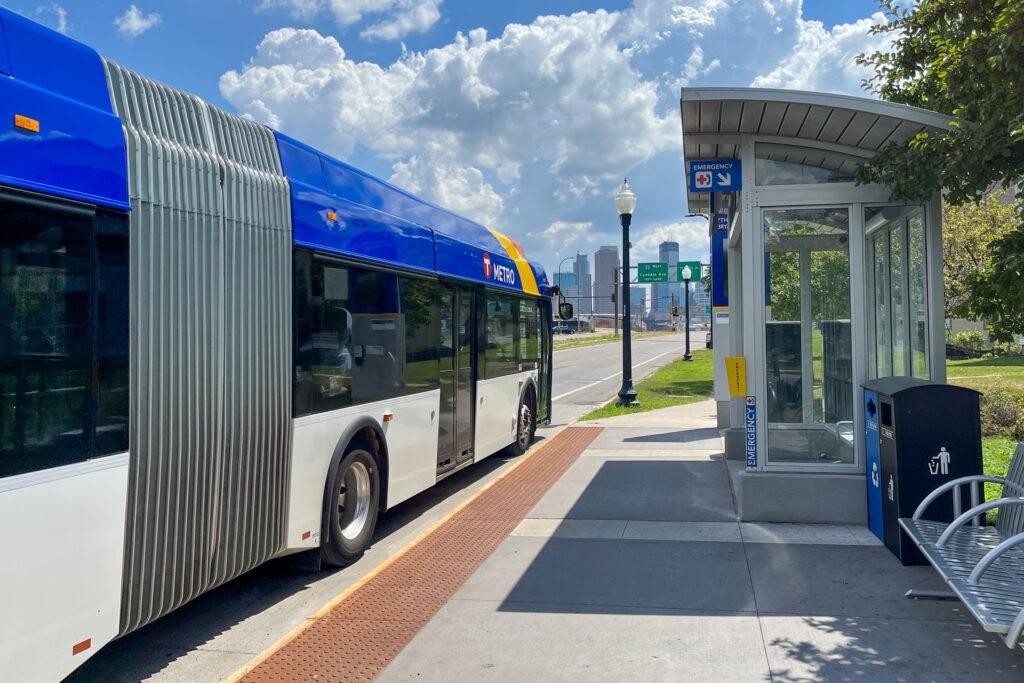
Those improvements, along with other infrastructure changes, including technology that gives buses priority at intersections, all combine to speed up BRT buses up to 25 percent over old local routes. Buses come every 10 to 15 minutes, and Metro Transit officials say more service will be added when the agency can hire more drivers.
“It's definitely great public transportation,” said Katrina Dionne of Minneapolis, another convert from the old local bus to the new BRT line. “It’s convenient and it's quick.”
Ridership on Metro Transit’s first two arterial BRT lines jumped by 30 percent over the old local bus lines they replaced, said Katie Roth, Metro Transit’s director of arterial bus rapid transit. And while general transit ridership in Minneapolis–Saint Paul has suffered since the pandemic, ridership on Metro Transit’s arterial BRT lines have held relatively steady.
Roth hypothesized that is because they provide a quality service in dense neighborhoods where transit is needed and more useful than in suburban locales.
“These lines have been real bright spots,” she said.
One more thing could speed up Twin Cities buses even more. It’s also the hardest to do.
Dedicated bus lanes are part of BRT’s by-the-book definition. In the Twin Cities, however, BRT buses typically share lanes with regular traffic.
Converting travel or parking lanes to dedicated bus lanes can be a controversial move in U.S. cities where most of the traveling public drives. And in the Twin Cities, local buses were delayed more by boardings, signals and frequent stops than by traffic, Roth said.
So Metro Transit focused its first few BRT lines on other improvements instead of pushing for dedicated bus lanes. That strategy has worked, Roth said.
‘We were able to make some really major gains in terms of addressing speed and reliability without putting red paint or bus lanes down,” Roth said.
Lindeke, the transit advocate, put it more bluntly: “These projects don't really have their own bus lanes and that's OK … Unless you’re in a congested downtown, you don’t need it.”
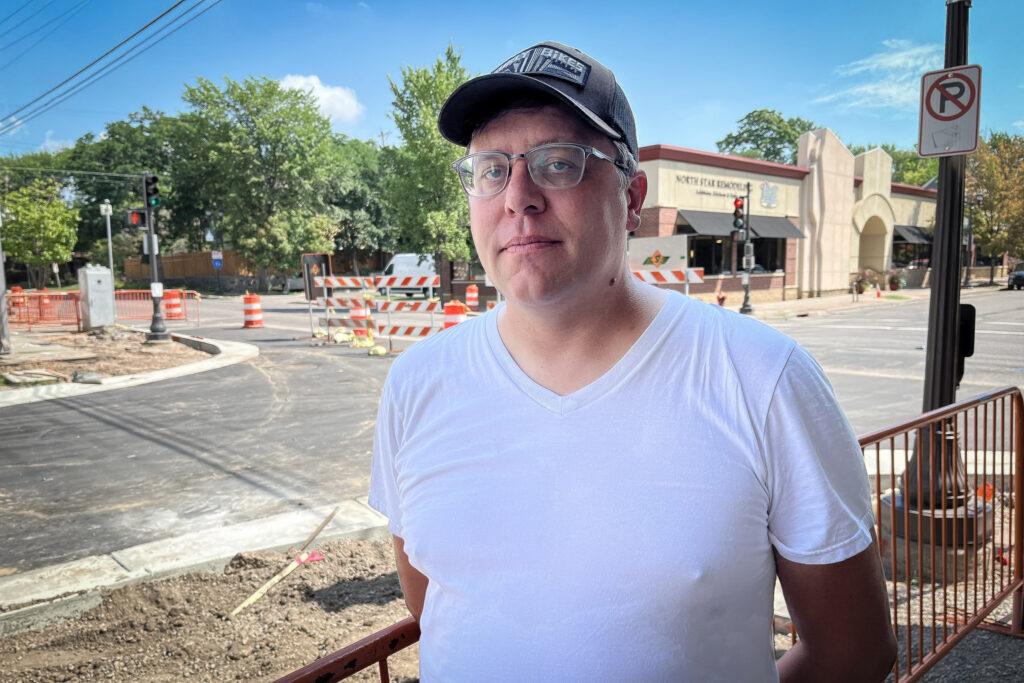
Future Twin Cities projects on more congested streets, however, will have at least part-time bus lanes for at least part of their routes.
In Denver, much of the East Colfax BRT line will be much closer to a bona fide bus rapid transit system compared to the Twin Cities’ lines. Colfax will be rebuilt from downtown to the Aurora border to give buses their own lanes in the center of the street.
That full-featured approach will drive up costs, too: The East Colfax line is estimated to cost $250 million and take three years to build. The Twin Cities’ under-construction B Line, by contrast, which will operate on streets roughly similar to East Colfax, is estimated to cost just $65 million and will take about 18 months.
The city and county of Denver studied a cheaper design more akin to those in the Twin Cities but ultimately chose the more costly center-running design. It also appears to have secured $127 million in federal funding for the line.
Elsewhere in Denver, the city has endorsed a somewhat cheaper, less disruptive design for the planned BRT line on Federal Boulevard. Buses will travel in their own lanes on the side of the street where Federal is currently three lanes wide, leaving two for general traffic. That project is estimated to cost up to $188 million in 2027 dollars.
Denver’s BRT plans will mark a shift in where and for whom the region invests in public transit.
RTD has been dreaming up a BRT network for years. But it was a state mandate to reduce climate emissions that prompted the Colorado Department of Transportation and other planning agencies to hit the gas — and contribute funding — to BRT lines.
“CDOT is committed to provide a BRT network that will improve transit for existing riders and add high-quality service for new ones,” CDOT Executive Director Shoshana Lew said in a statement.
The Denver region’s turn toward buses comes after RTD has spent billions of dollars over the last two decades on rail lines. Those were mostly designed to serve suburban commuters while skirting city neighborhoods, and ridership on most of those lines has yet to meet expectations.
The planned arterial BRT lines, by contrast, will focus on relatively dense urban corridors where riders are more likely to be people of color, low-income and transit-dependent. CDOT and RTD are also planning a BRT line on the highway between Boulder and Longmont.
“On the bus transit side, this is definitely the biggest thing I think that's ever happened since the establishment of the Regional Transportation District in 1969,” Welch said.
That investment will mimic the Twin Cities approach, too. Metro Transit prioritized lines that serve historically disadvantaged populations, Roth said. The Minnesota state government has also pumped hundreds of millions of dollars into BRT lines and transit in general in recent years.
“We need more transit,” said Rep. Frank Hornstein, a key Minneapolis state legislator. “We need more people riding transit if we're going to have metropolitan areas that are equitable and meeting our climate challenges.”









